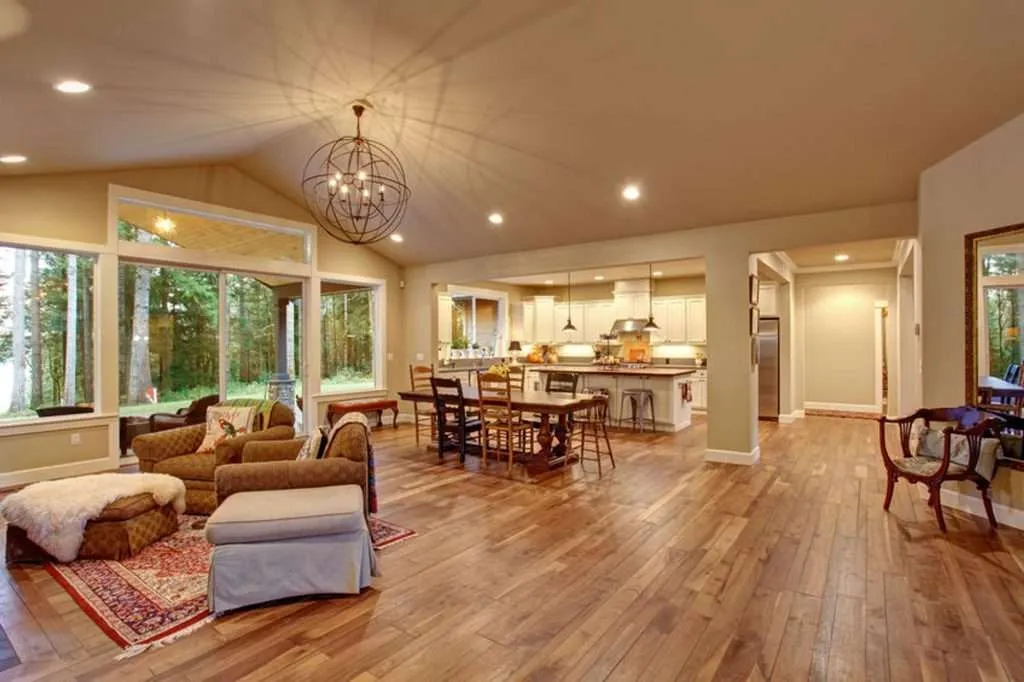Choosing the proper flooring can have a huge impact on the mood of a house. Timber flooring is a timeless classic, adding warmth and beauty to your home, and is a go-to choice for many homeowners. There are a couple of different factors that take some time to consider before deciding. This article will elaborate on the vital aspects that must be considered while selecting timber flooring to suit the aesthetic as well as functional requirements.
Types of Timber
There are different types of timber flooring in Melbourne because timber has its own characteristics. Traditional solid hardwood is a durable and elegant option. In contrast, engineered wood is made from multiple layers and is very stable where humidity levels vary, such as in a basement. Though not real wood, laminate looks like real wood and is a great option if you want something less expensive. Knowing these types aids in selecting the type best suited for particular needs.
Cost Considerations
The budget is an important part of any home improvement project. The price ramifications of timber flooring are determined by the kind of timber species and its quality. Exotic woods provide unique patterns but usually come with a higher price. You could also think of some local varieties that can give you the same elegance at a cheaper price. Be sure to add installation costs as well, since having a professional install your pieces will ensure they last and look great.
Durability and Maintenance
Durability is important in high-traffic areas. Hardwoods such as oak and maple are recognised for their robust and durable features. Timber floors require minimal maintenance, mostly just cleaning and, from time to time, resurfacing to keep their stunning appearance. Another benefit is engineered wood’s low upkeep, which is geared toward solid wood; hence, they are low in maintenance.
Aesthetic Appeal
Natural flooring always brings warmth to any interior, and it is usually timber flooring. The appearance of a room changes greatly depending on the type and grain pattern, since species differ widely in colour and grain patterns. Ash is a lighter wood that can help achieve that open feeling, and walnut is a darker wood that adds some elegance. Choosing the perfect counterpart involves taking into account the existing decor and prevailing atmosphere.
Environmental Impact
For many homeowners, sustainability is a word not far from their thoughts. Choosing timber from sustainably managed forests helps preserve the planet. Environmentally sound practices are indicated with climate policy labels like the Forest Stewardship Council (FSC) label. It also uses fewer raw material that has a lower ecological footprint. Awareness of these factors allows a more environmentally conscious selection.
Installation Process
The type of installation impacts the price and visual aspects of your flooring. Floating floors usually install faster and are cheaper. You can also use a glue-down or nail-down method for a firmer feeling underfoot. Having a professional installer help you make your choice ensures that the method you are using is appropriate for your home.
Climate Considerations
Understanding that timber flooring performance and service life can vary considerably in different climates is essential. In humid climates, this means that engineered wood is less likely to warp than solid hardwood. Conversely, dry climates may accommodate any timber. A floor that is capable of withstanding the challenges posed by the environment is selected considering the local weather.
Lifestyle and Usage
Your lifestyle should ultimately influence your choice of flooring. More durable woods that withstand scratches and dents could be useful for homes with kids or pets. Similarly, in quieter families, aesthetics might matter more than durability. Considering what you do on a daily basis and what you need for years to come can help you in making this decision.
Acoustic Properties
Sound plays an essential role in our overall well-being, and having the proper timber flooring can make a difference in the acoustics in your home. If your space has hard surfaces, sound may bounce around more noisily from wall to wall. This can be somewhat remedied with carpets or underlays that are designed to absorb sound. By being aware of these acoustic dynamics, one ensures a more pleasant acoustical environment that works harmoniously with the apparent visual appeal of timber floors.
Conclusion
Timber flooring selection seems to be a decision between appearance, function, and the pocket. Homeowners can choose what works best for their lifestyle by knowing the types of timber, the costs associated, and the maintenance required. Taking into account environmental conditions, installation techniques, and sound characteristics makes for a confident decision in the outcome of the final result. Timber flooring can add elegance and warmth to a home with proper planning and consideration.
